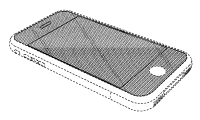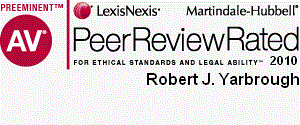Newsletter Issue 39 - May 2012
In this issue:
University copyright on student work
Design patent and trademark law merge
Fair use of MLB broadcasts
Ask Dr. Copyright
Dear Doc:
I have heard several of my friends say that university copyright policies are complicated and are a "bear" to deal with. What, exactly, does that mean?
Your friend, Yogi
Dear Yogi:
Many colleges and universities have so-called "intellectual property policies" that they say apply to student-created work. Many of these policies say that what students create is actually owned by the school, despite the fact that students pay to attend, and are in no way employees of their schools. Some more enlightened schools just say that they have a right to use the student's work without paying for it, but that the student owns the copyright. This is an area of great controversy.
Let's start at the beginning. Under U.S. Copyright Law, if you are an employee, your employer is actually the author of whatever you create on the job. If you're not employed, then you must have a signed written agreement that gives rights to another party. No signed agreement - you own the copyright. Furthermore, that agreement must evidence "consideration" for the grant of rights, such as payment.
Universities have traditionally had "policies" about ownership of inventions and copyrighted works. They publish these, and sometimes they say that these policies are legally binding on not only the faculty, but also the graduate students and undergrads. Such was the case of Colorado University student Andy Duann, who snapped a wonderful photo of a bear falling out of a tree on campus on April 26, 2012.
Because Andy was a reporter for the student newspaper, and the school makes all students who work on the newspaper sign away their rights (seemingly without any consideration) when Andy sold the photo to the Boulder Daily Camera, and the Associated Press, the University sent their lawyers after him.
All's well that ends well, sort of. You see, Andy joined the newspaper in mid-semester, and they never got around to forcing him to sign their agreement. After a brief kerfuffle, the University admitted this and admitted that Andy owns the rights. Not so, for the bear. After he was tranq-darted out of that tree and safely hauled away and released unharmed off-campus, he was hit by a car on May 3 while crossing a road. So while Andy's rights may have survived the ordeal, his ursine friend was not so lucky.
The attorneys at LWH deal with these issues every day. If you or your student is presented with a policy or agreement that looks out of line, give them a call. After all, Andy made more than the bare minimum when he sold that photo.
The "Doc"
APPLE v SAMSUNG - Design Patent Law Moves Closer to Trademark Law
A 'design patent' is a monopoly granted by the government to make, use and sell a product having a particular appearance. Design patents protect how a product looks, not what it does. A person who copies a product protected by a patent, including a product protected by a design patent, will be ordered to stop infringing by a court only if the patent owner can demonstrate that the patent owner will suffer 'irreparable harm' due to the infringement that cannot be compensated by money damages. Such a court 'injunction' against an infringer is difficult to obtain under this standard.
On the other hand, a 'trademark' indicates the source of a particular type of goods. If a trademark becomes 'famous' (for example, Coca-Colaź) then a court will order a trademark infringer not to use the famous trademark for other types of goods if the use will 'dilute' the famous trademark; that is, if the use will reduce the stature of the famous trademark in the eyes of the public. It is easier to obtain an injunction stopping infringement under the famous trademark standard than under the patent standard.
Apple and Samsung are in a worldwide battle over the alleged copying of Apple's patented smartphone and tablet computer designs by Samsung. In a case before the Federal Circuit Court of Appeals, Apple argued that Samsung should be enjoined from selling its Galaxy smartphones because Samsung's copying of the patented Apple design amounts to 'design dilution.' The argument is that Apple is 'irreparably harmed' for purposes of a preliminary injunction because Samsung's product will 'dilute' the Apple design in the eyes of the public. This argument blends the trademark concept of dilution into patent law. The trial court rejected the argument for lack of evidence. The Federal Circuit affirmed the trial court's conclusion that the argument was not supported by evidence, but concluded that it "would have been improper" to reject the argument outright. The Federal Circuit Court's decision leaves Apple free to renew the argument with more evidence when the case comes to trial.
The Apple v Samsung case blurs the distinction between trademark and design patent law and potentially will ease the burden of a design patent owner in stopping an infringer.
Major League Baseball Should Play Fair with Fair Use
On May 28th, Phillies versus the Mets, ace-pitcher Cole Hamels, allowed four runs in eight innings but got out of an eighth-inning jam by making the right pitches at the right time. But it was first baseman Ty Wigginton's game. He saved the day by going 3-for-3 with a double, home run, two walks, and a career-high six RBI's.
So, now that I've given you a brief synopsis of the game, were you aware that Major League Baseball (MLB) believes I'm guilty of copyright infringement? Yes, that's right, MLB prohibits all accounts of the game for any purpose. According to Dr. Copyright, who graciously provided me an emergency consultation, I shouldn't worry, though. Here's why.
You've probably heard the mantra before or during every broadcast of a major league baseball game (football, too):
Any rebroadcast, reproduction or other use of the pictures and accounts of this game without the express written consent of Major League Baseball is prohibited.
The National Football League has a similar warning:
This telecast is copyrighted by the NFL for the private use of our audience. Any other use of this telecast or of any pictures, descriptions, or accounts of the game without the NFL's consent, is prohibited.
These warnings are harsher than they need to be. Do your think that every journalist covering a baseball game has obtained permission from the MLB to write a story about it? Of course not. But who gives the sports leagues authority to prohibit you from recounting a game? The answer is no one, not even copyright law. The prohibition is not only harsh, it's flat wrong.
There is little dispute that broadcasts of sporting events are copyrighted events. If one were to record a game and post it on YouTube (assuming that you could do so), the copyright police would bring it down before you could turn off your computer. This is the leagues' right. They produce and distribute the game and, therefore, have a right to make sure that others are not profiting from their endeavors. But recounting a sports story, whether verbally or in print, is not a copyright infringement, it falls under the broad designation of "fair use". Fair use is written into the U.S. Copyright Act (Title 17 § 107) and permits use of copyrighted works for purposes of criticism, news reporting, teaching, scholarship or research. Granted, the boundaries of fair use are fuzzy -- courts have and continue to wrestle with what constitutes fair use -- but it remains one of the bulwarks of first amendment protection from those who claim a monopoly on information. So, the bottom line is don't be intimidated by misinformation.

